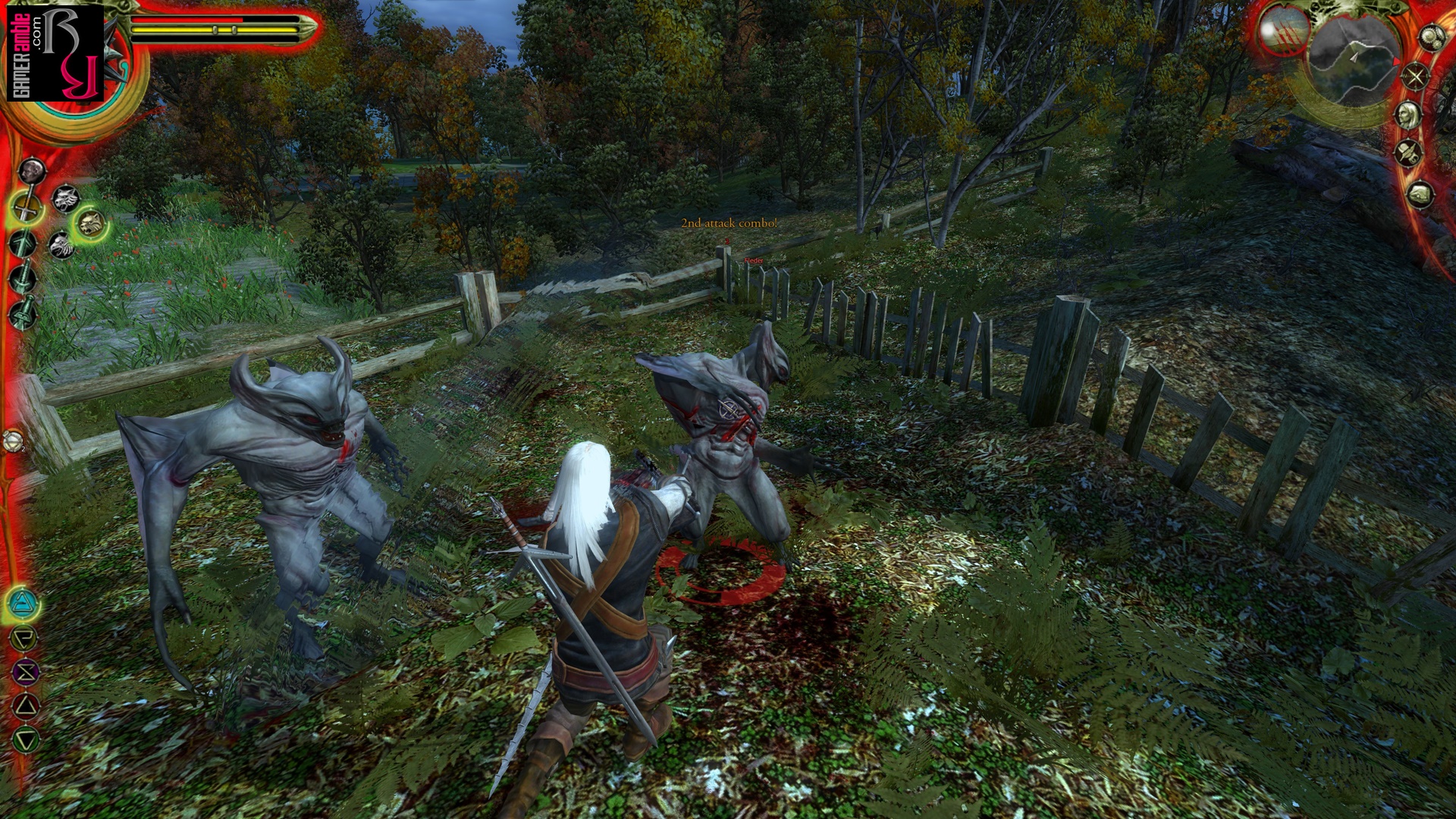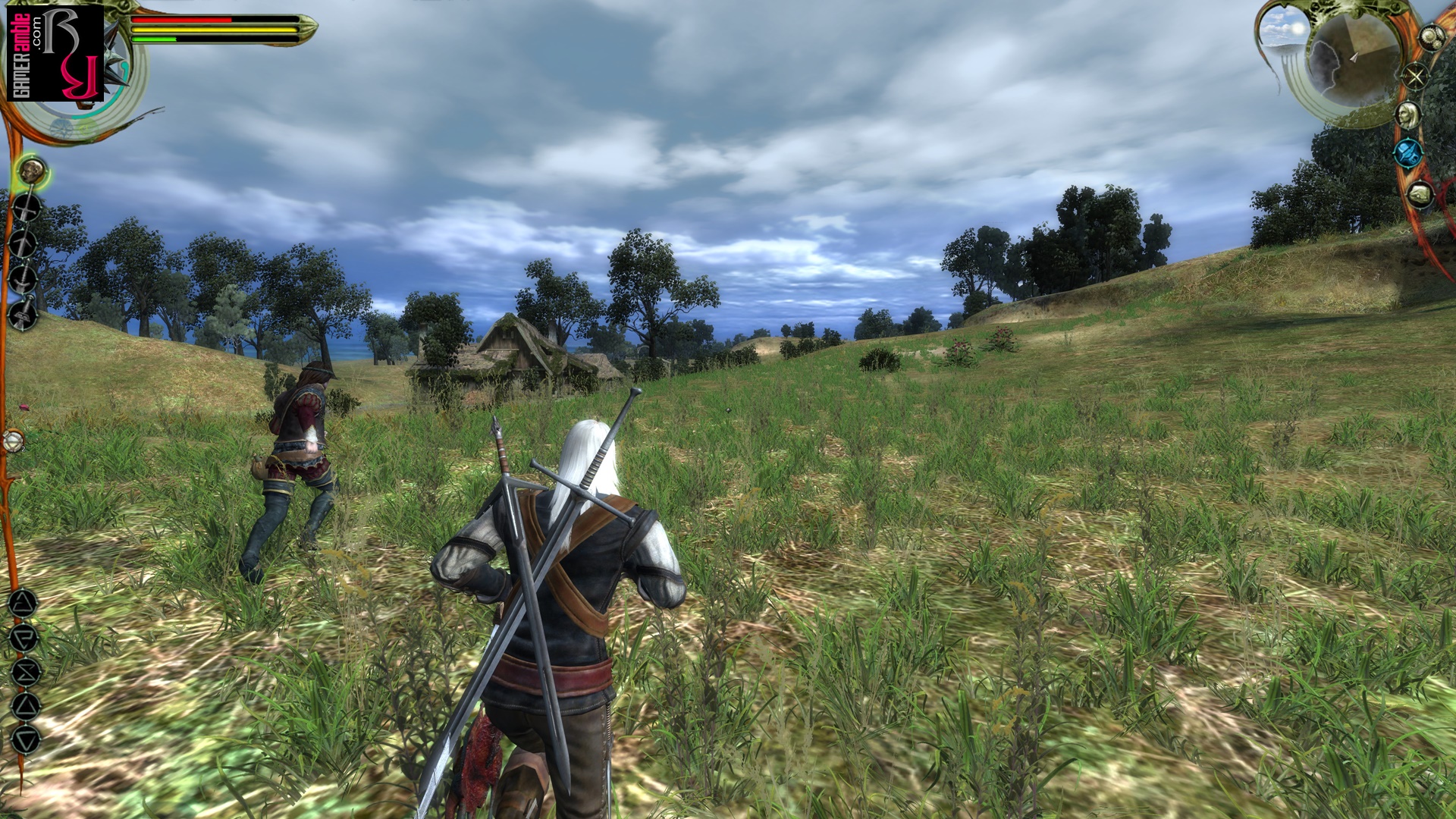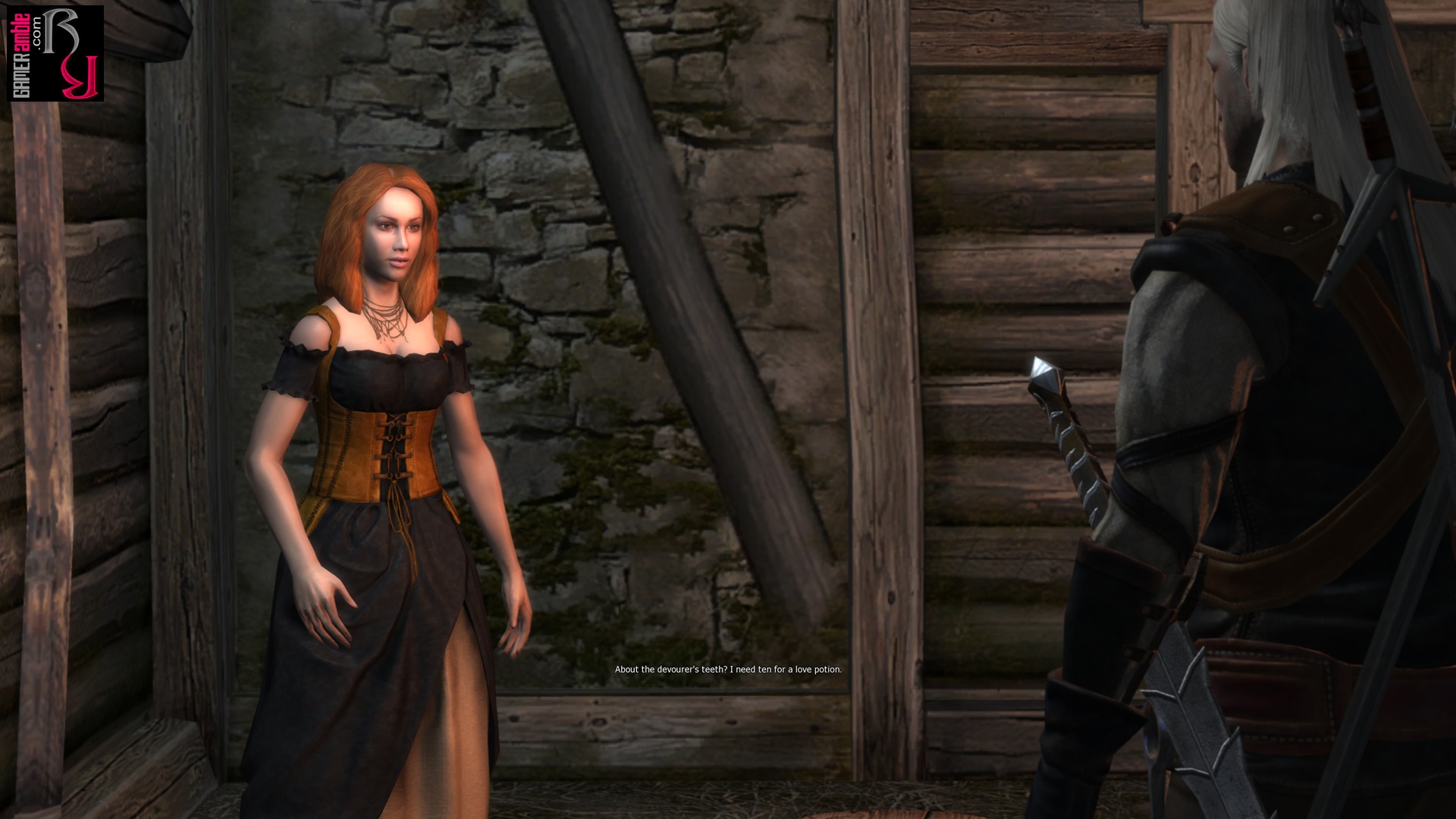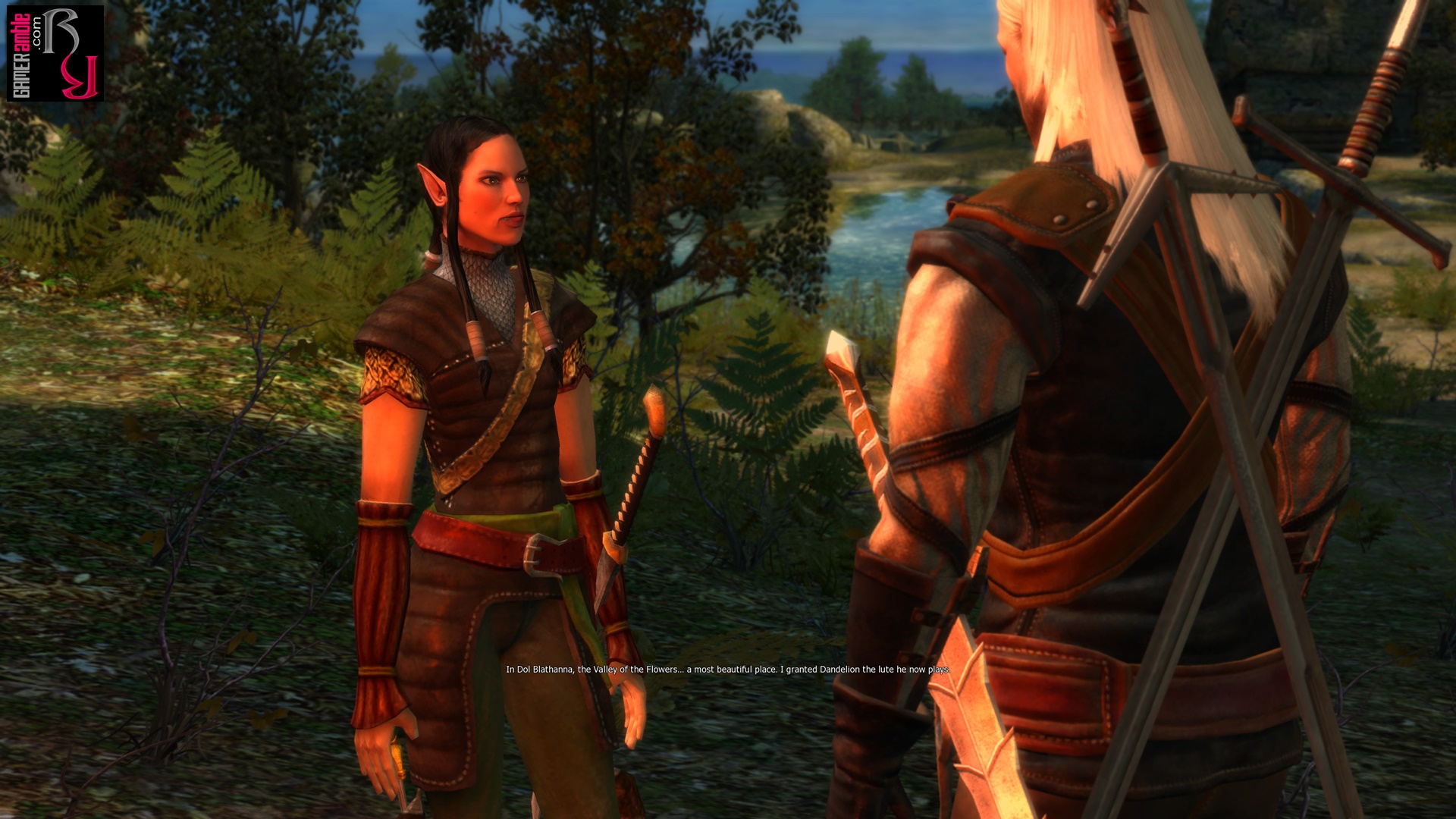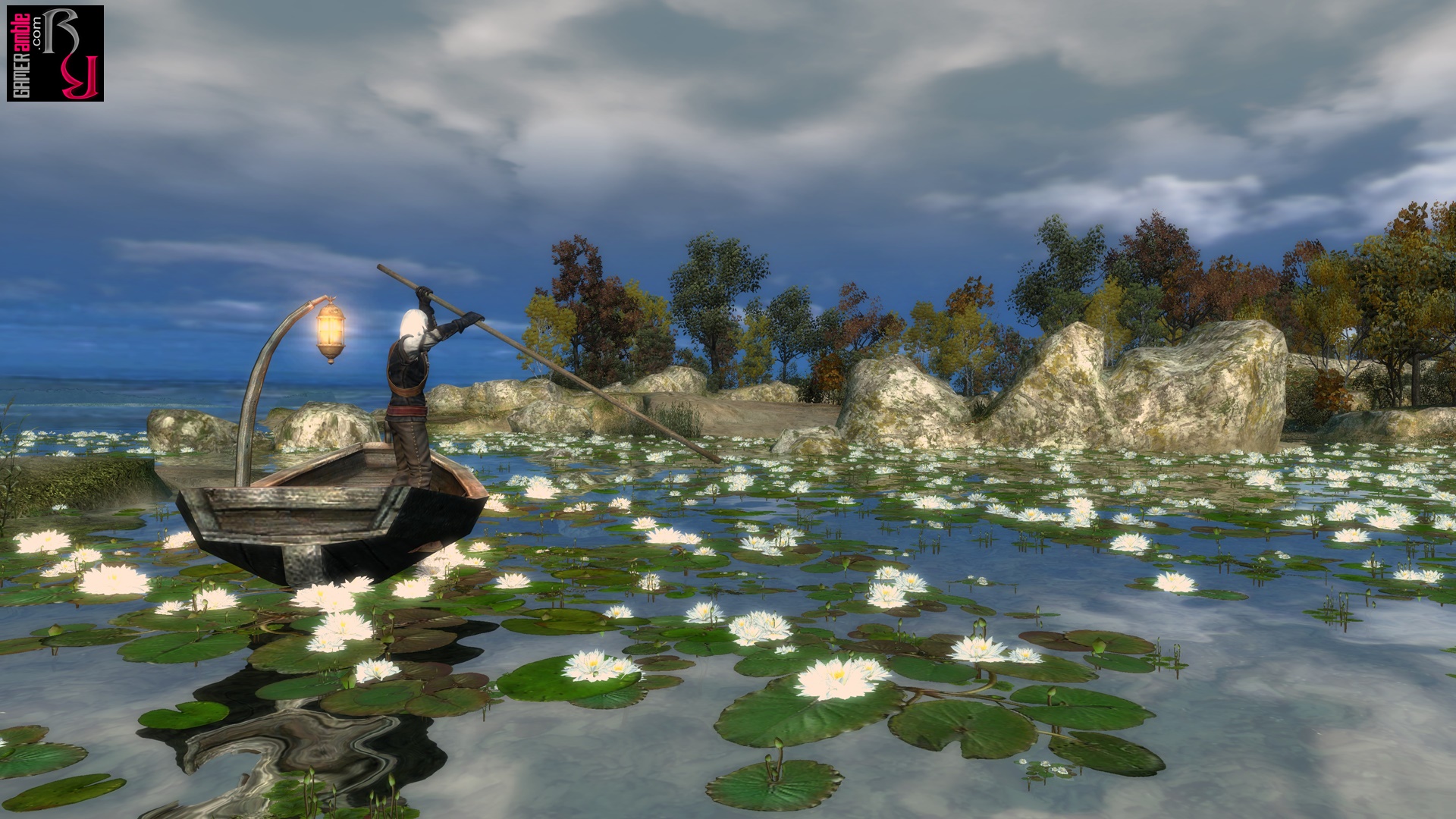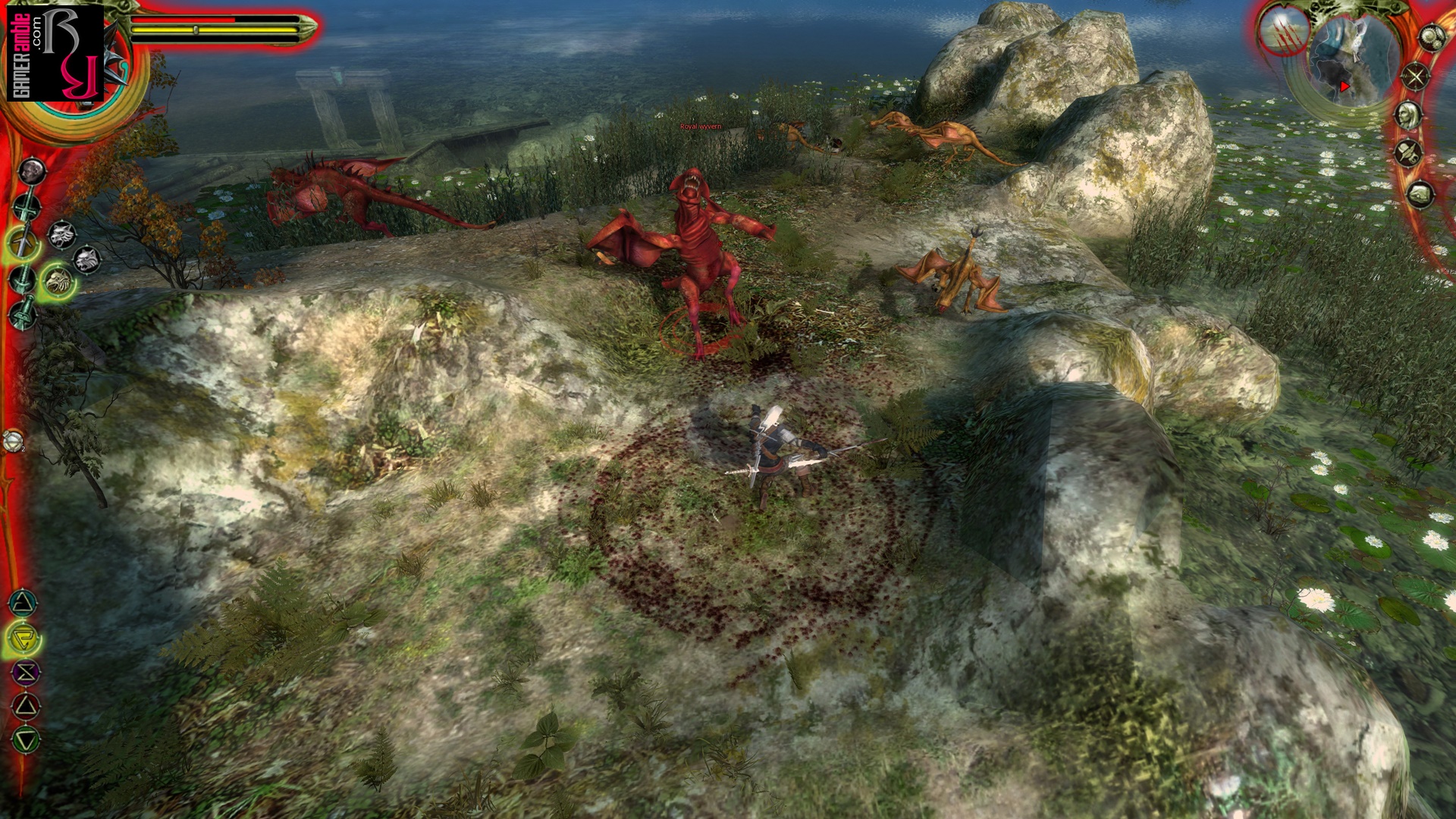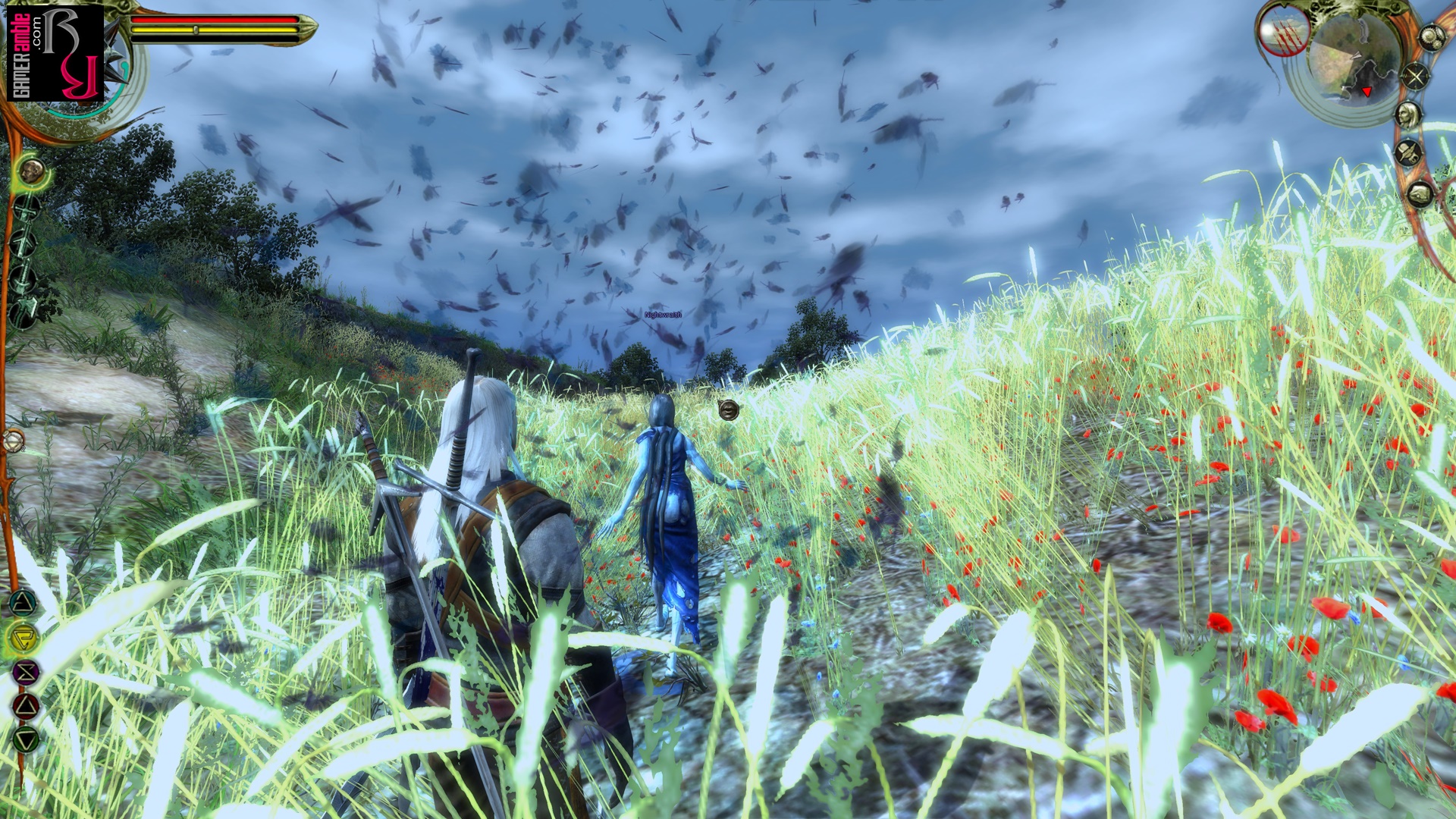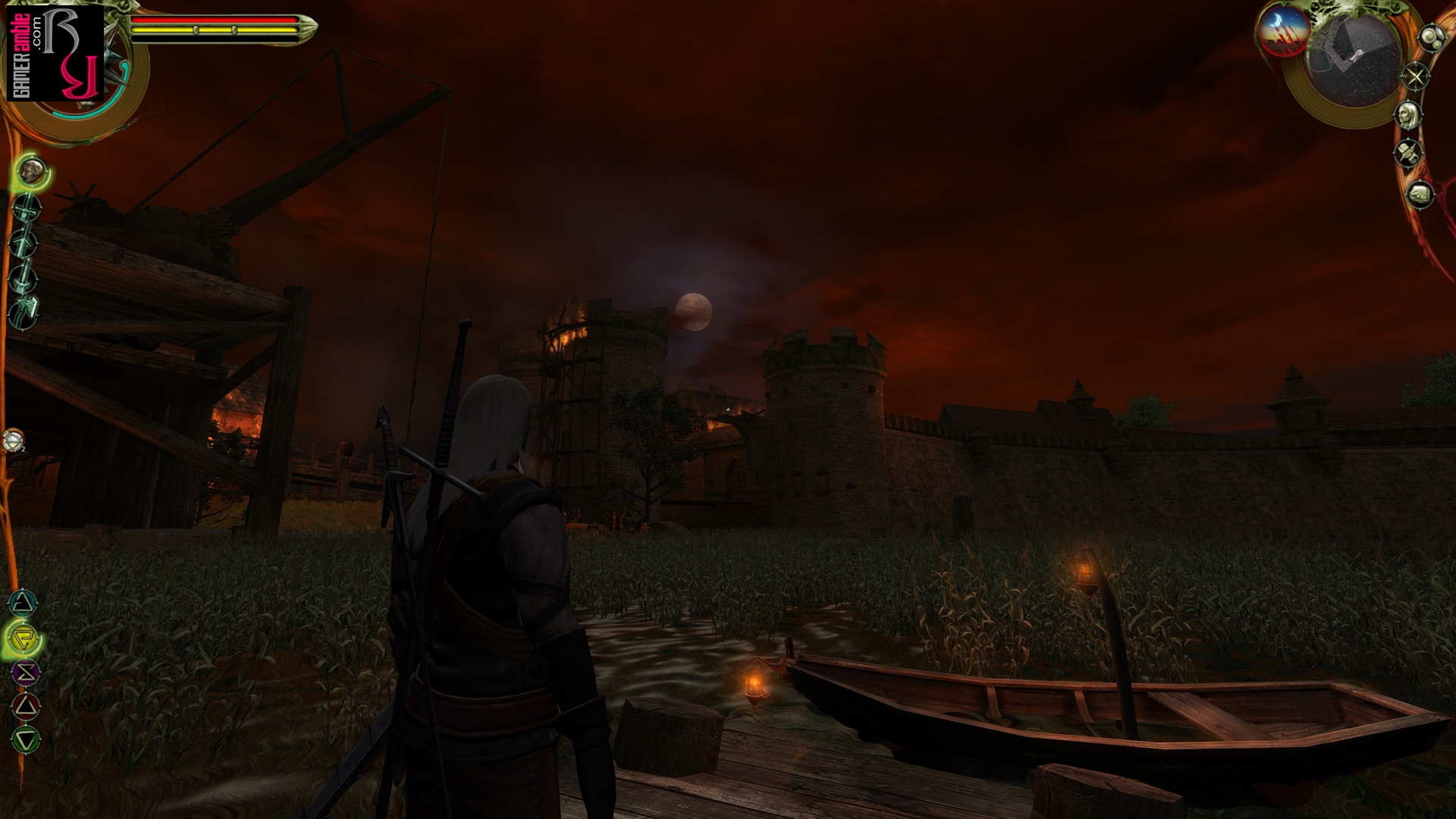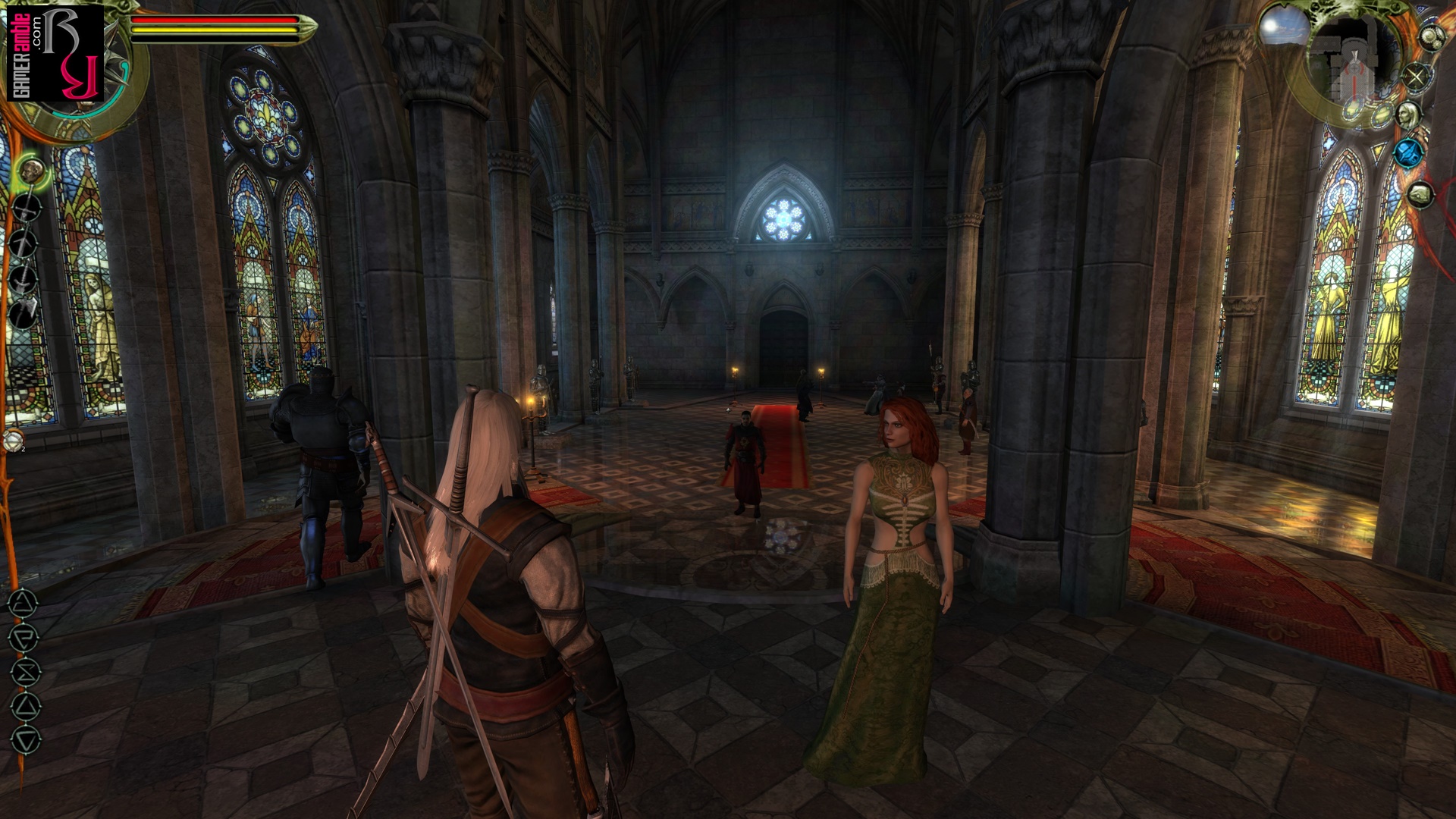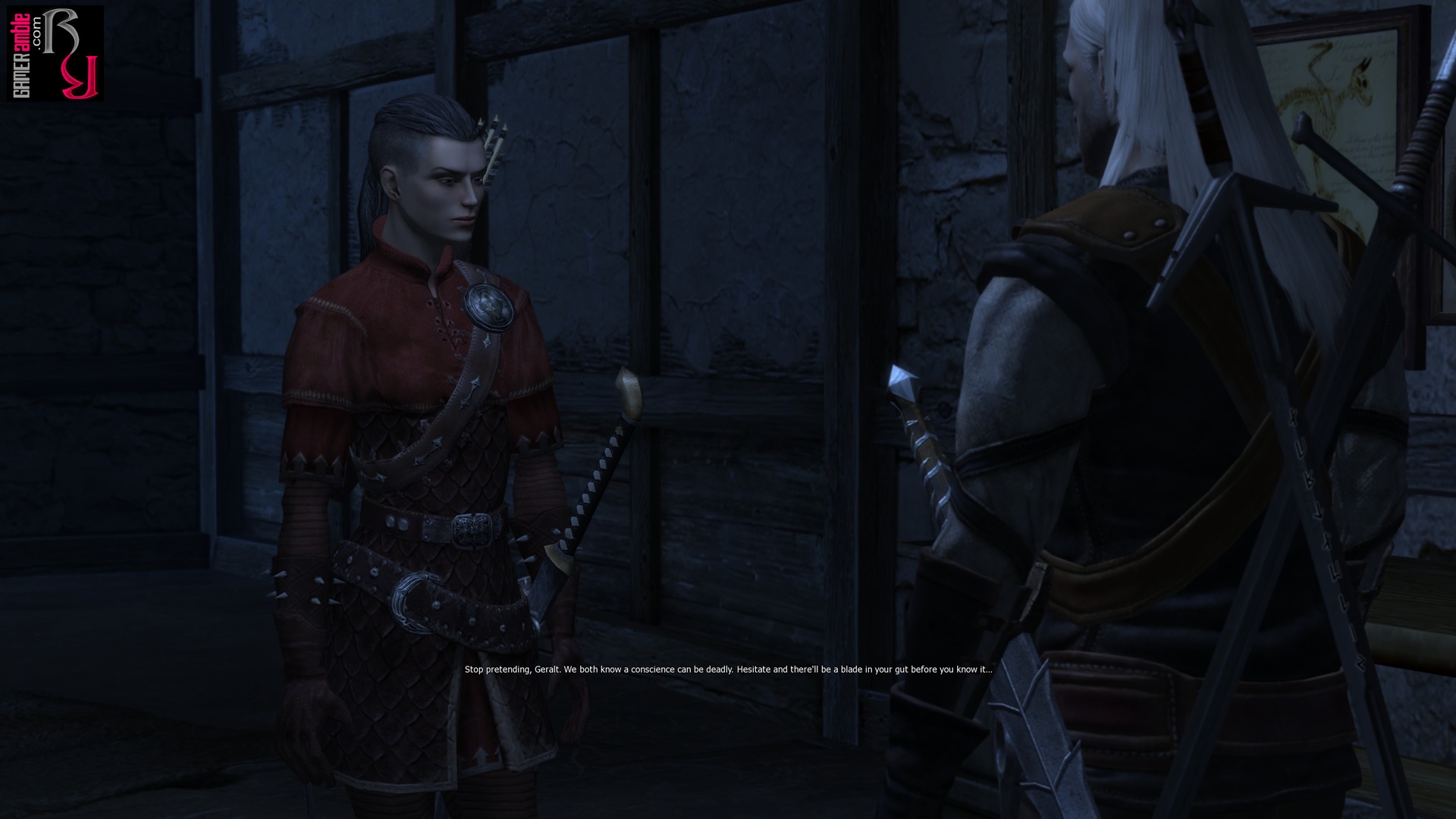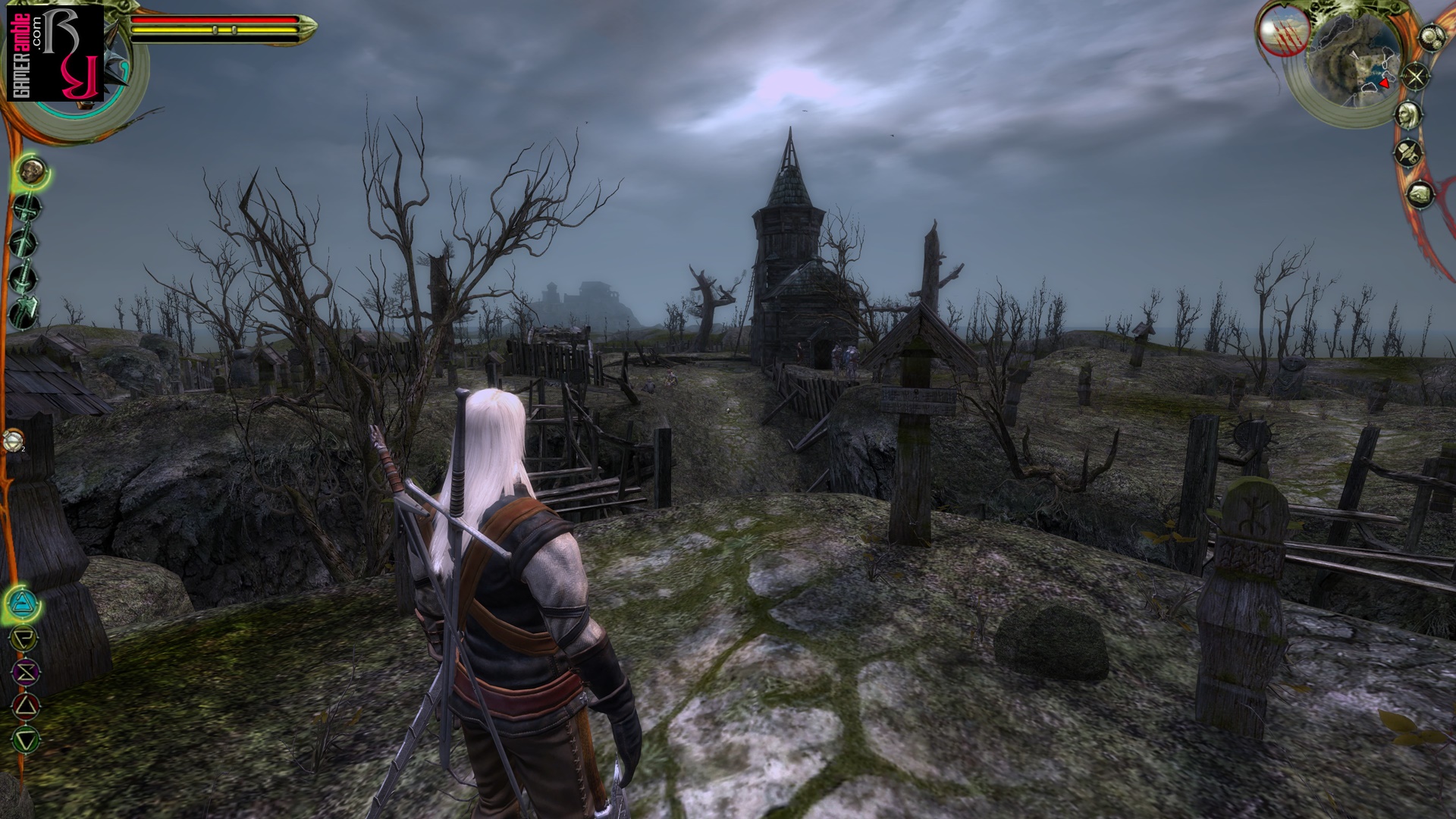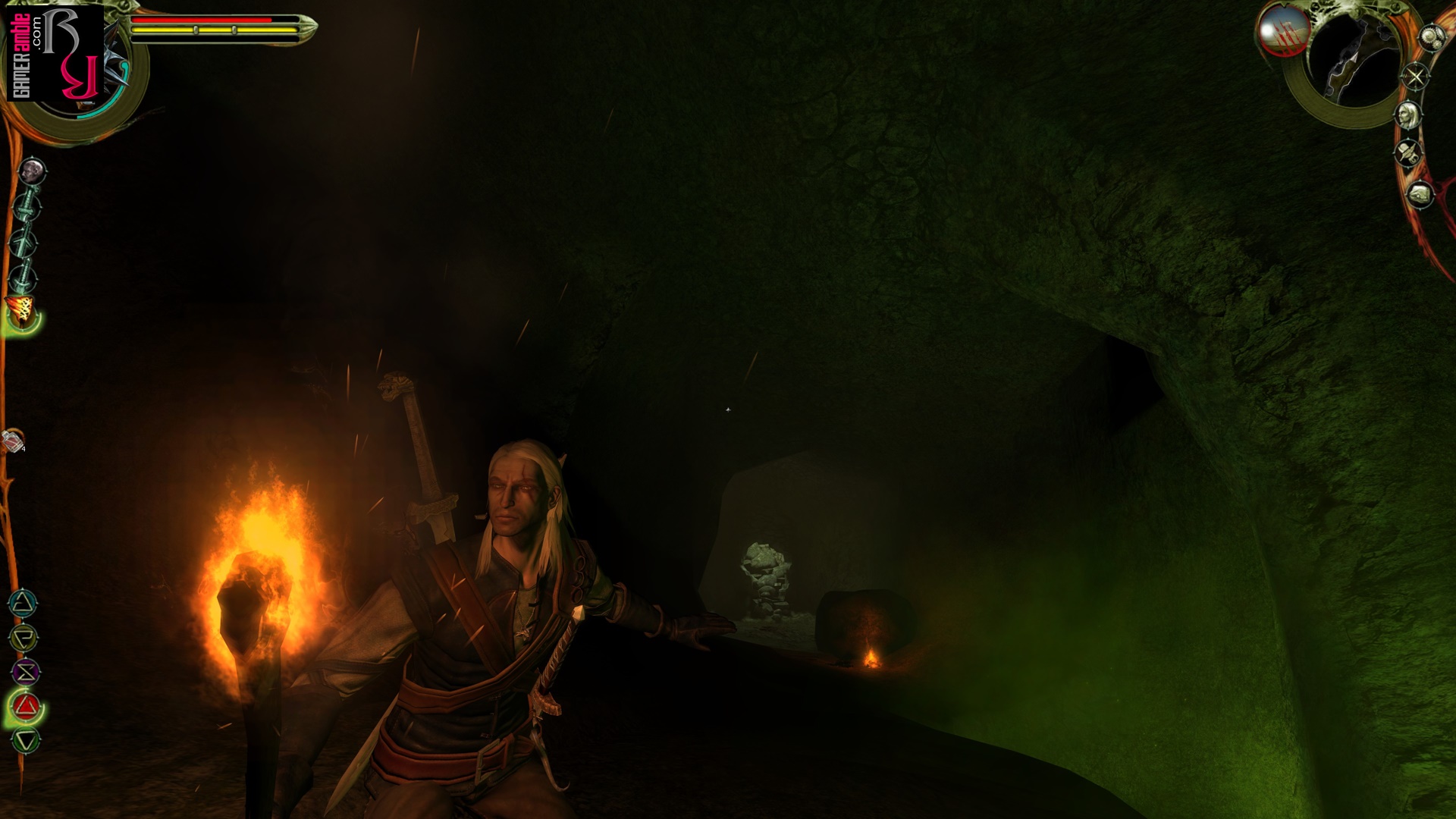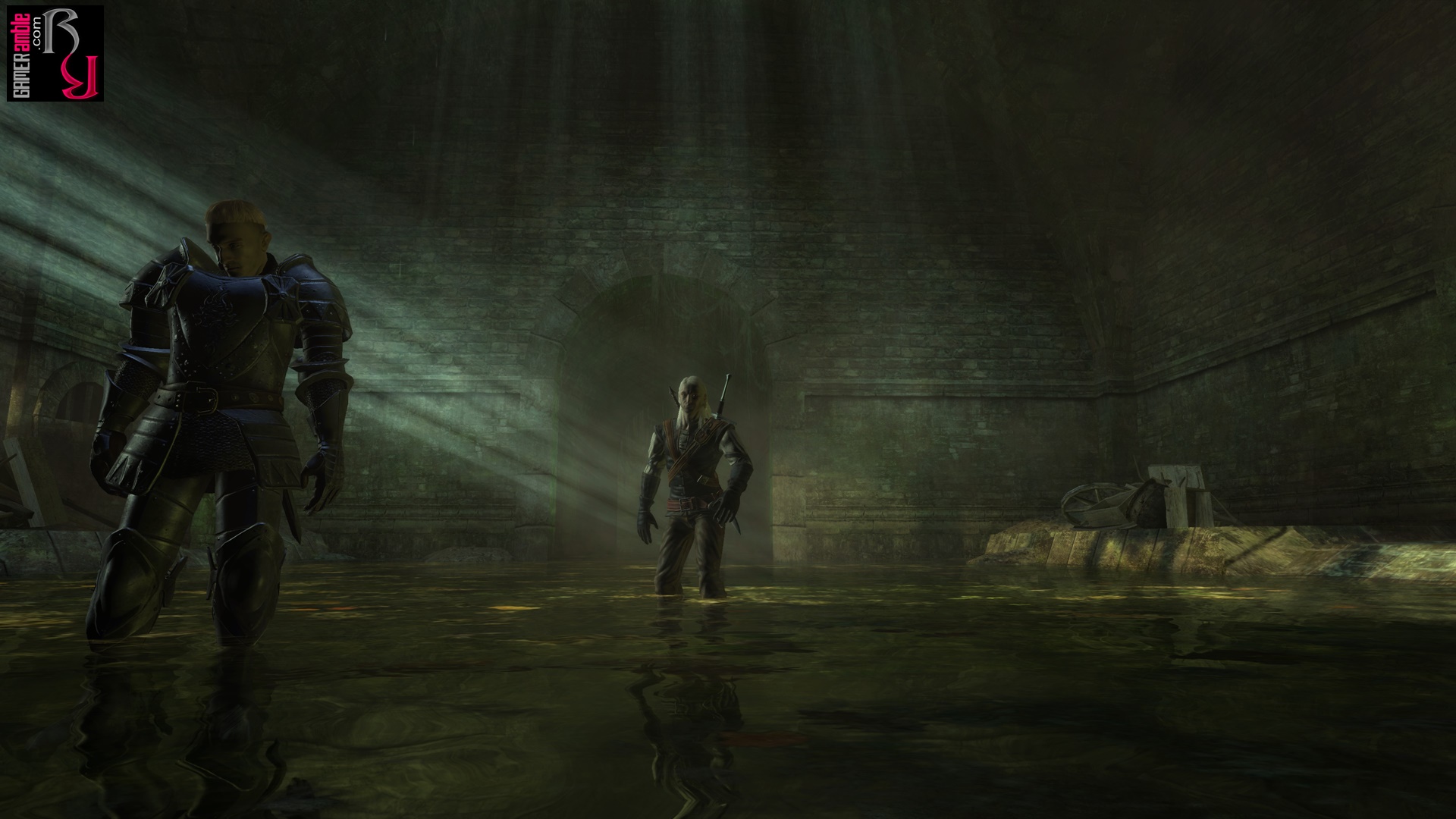The Witcher: Enhanced Edition Director’s Cut
Developer: CD PROJEKT RED | Publisher: CD PROJEKT RED, 1C-SoftClub | Release Date: 2008 | Genre: Action / RPG | Website: Official Website | Purchase: Steam
Mention epic fantasy and most people will immediately think of J. R. R. Tolkien, Robert Jordan, or George R. R Martin. However, there are also plenty of other non-English authors out there carving their niche on the genre, such as the Polish author, Andrzej Sapkowski. His “Witcher” stories, which features a monster hunter named Geralt of Rivia are quite popular in Poland, so it is no surprise that CD Projekt, a Polish game developer, was drawn to the license. The result is The Witcher, an action RPG based on the novels by Andrzej Sapkowski that casts players in the role of Geralt himself.
The game is set after the events of the books and sees Geralt taken back to the witcher stronghold of Kaer Morhen after a group of his brethren finds him unconscious in a field. Geralt discovers that he has amnesia and cannot recall his past, but doesn’t have much time to dwell on this as the stronghold is attacked by bandits. The group, calling themselves Salamandra, appears to be under the control of a powerful mage who is in search of the secrets used by the Witchers to mutate humans into monster hunters with extraordinary powers. After the siege Geralt is tasked with tracking down the bandits and retrieving the secrets they stole, which leads him to the city of Vizima. It is while investigating Salamandra that Geralt discovers all is not well in the kingdom. Humans appear to have a deep distrust of non-humans, while the Elves and other non-humans have turned to terrorism to fight back against the oppression. The mutations involved in making him a Witcher makes Geralt an outsider to both humans and non-humans, but they are also willing to grudgingly make use of his monster-slaying services.
The Witcher is a game that is filled with choices, but unlike other RPGs, you will not see the consequences of your actions immediately. It’s not a case of picking the very obvious “good” or “bad” solutions to situations either. Instead, you are often left picking what seems to be the lesser of two evils only to find out much later what the outcome of your actions is. This was done to prevent players from simply saving and reloading to pick the “best” outcomes, which also means the game has some replay value for those interested in exploring all of its story avenues. Despite all the moral ambiguity most choices still come down to either siting with the knights trying to protect Temeria or the Elves and non-humans calling themselves the “Scoia’tael” and fighting back against the humans. Geralt can also try to remain neutral in the whole matter, but this might just result in animosity from both sides instead of just one.
When Geralt is not getting sucked into political plots and petty problems he can do what he does best, namely hunt monsters. Temeria is a place filled with monsters, so there is never a shortage of things to kill. Geralt has lost his memories, but still retains his fighting abilities as well as his ability to perform some basic magic. Combat is also a little different compared to other action RPGs as Geralt not only has two different swords, one for humans and one for monsters, but also three different fighting styles. This means you have to match the right sword as well as the correct fighting style with each foe you encounter. The “Strong” fighting style is slow, but effective against armored opponents, while the “fast” fighting style is the only way to deal damage to nimble opponents. There is also a specific fighting style that is designed for situations where Geralt is surrounded by a group of enemies as it will allow him to deal damage to all of them.
It all sounds very complicated, but the combat itself mostly involves clicking on enemies and watching the timing of your clicks to perform combos. To mix things up Geralt can also drink a variety of ability-enhancing potions but don’t overdo it or the resulting toxicity will kill him. Combat takes place in real-time, but players can pause the action at any time. This is generally not needed, though, as players only control Geralt instead of a party. You are occasionally joined by NPCs who will fight on your side, but they will do their own things, so you don’t have to worry about them. The combat can feel a little clunky at times until you get the hang of performing combos but feels a bit more involved than simply issuing orders and watching the battle unfold or blindly clicking on everything in sight.
The game uses a modified version of BioWare’s Aurora Engine and actually looks pretty good in action. Players can choose from three different camera styles, with the over the shoulder view perfect for exploration while the isometric views are better suited for combat. The animations for the fighting were motion captured using medieval fighting experts, which really shows. Stringing together a combo causes Geralt to perform intricate sequences while the blood of his enemies sprays out in a circle around him. It’s also nice to see some unique monsters in an RPG instead of the usual skeletons, spiders, goblins, and bats. There’s a good reason to kill monsters too as their body parts can be harvested for potions, but only if you’ve read their bestiaries to learn what useful parts they have. Geralt’s adventures take him through towns, fields, sewers, dungeons, caves, swamps and the visuals include some nice day-night transitions as well as dynamic weather. Character models and animations for the NPCs don’t fare quite as well, though, although this issue has been addressed somewhat with the “Enhanced Edition” update. Some NPCs definitely look far better than others and there’s still plenty of award animations abound. The inclusion of additional NPC models helps a bit with the confusion of running into endless identical-looking characters.
The Enhanced Edition also features an English translation that was rewritten and with more lines recorded. Although we didn’t play the original version it must have been pretty bad as even with the new lines the conversations in this game can still be very awkward. For example, the death of a relatively major character is treated very matter of factly by everyone present, which feels quite jarring. The way that conversation topics can jump around is also very jarring. Also, we noticed the occasional spelling and grammar mistakes, but considering how much text there is in the game it could have been much worse. Although Geralt sounds as gruff and gravely voiced as one would expect from a superhuman monster slayer the other characters in the game tend to sound very stiff. A variety of accents can be heard in the game and let’s just say that not all of them sound good. The music fares considerably better with plenty of epic tracks that sound all moody and orchestral. The controls are decent enough, but it takes a while to get used to the combat system. The inventory system has been revamped to separate your alchemy ingredients from the other junk, but the whole thing still feels very bloated. Players who enjoy the thrill of finding new weapons and armor in role-playing games will also be disappointed by the way that The Witcher handles things.
The Witcher is a fun game, but towards the end of the fifth chapter and the epilogue, it does feel like things are getting dragged out a bit too much. The story is quite interesting, but the endless fetch quests that sees you running back and forth between different areas can also be a huge pain. Thankfully, the Enhanced Edition improves the loading times, which were apparently almost unbearable in the original release. There is a lot here that RPG fans will love, but just as many quirks that prevent it from being a classic. It will keep players busy for ages, but with all the fun there also comes some tedium. If you have the patience to put up some of the more obtuse elements of the game you’ll find a game that ticks all the right boxes for a dark fantasy experience filled with blood, mayhem, and intrigue.
System Requirements
- Minimum PC System Requirements
- Minimum Mac OS X System Requirements
- Recommended Mac OS X System Requirements
- Supported OS:Microsoft® Windows® /XP/Vista
- DirectX Version:DirectX 9.0c (included) or higher
- Processor:Intel Pentium 4 2.4 GHz or Athlon 64 +2800 (Intel Pentium 4 3.0 GHz or AMD Athlon 64 +3000 recommended). Athlon XP series, such as the Athlon XP +2400, is not supported
- Graphics:NVIDIA GeForce 6600 or ATI Radeon 9800 or better (NVIDIA GeForce 7800 GTX or ATI Radeon X1950 XT or better recommended)
- Memory:1 GB RAM (2 GB RAM recommended)
- Sound:DirectX version 9.0c-compatible sound card
- Hard Drive:15 GB Free
- OS: OS X 10.8, 10.9, 10.10, MacOS 10.15 (Catalina) is not supported
- Processor: Intel Core i5
- Memory: 4 GB of RAM
- Graphics: nVidia GeForce GT 650m (1440×900), AMD Radeon HD 6750M (1440×900) or Intel HD 5000 (1366×768)
- Hard Drive: 14.25 GB free space
- OS: OS X 10.8, 10.9, 10.10, MacOS 10.15 (Catalina) is not supported
- Processor: Intel Core i5 or Core i7
- Memory: 4GB RAM
- Graphics: nVidia GeForce GT 650m (1440×900), AMD Radeon HD 6970M (1920×1080) or Intel Iris Pro 5200 (1440×900)
- Hard Drive: 14.25 GB free space


